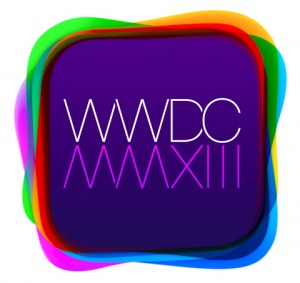Apple Inc. (NASDAQ:AAPL) has declined to reveal any new hardware at its Worldwide Developers’ Conference (WWDC) for the second year in a row, breaking somewhat with previous precedent. Before this year, new device were revealed either yearly or every other year. Expectations were high that there would be a look at either the new iPhone 6 or the iWatch, but neither put in an appearance, leading to some investor dissatisfaction and a mild dip in share prices.
The software news has been ample thus far, however, and well received by developers attending the conference. Since the gathering is meant chiefly for them, this indicates that it is already a success. Given that a sizable part of Apple’s profits now come from sales of apps, software, and services, the fact that developers are pleased should be pleasing to investors also, given that this lucrative section of the firm’s sales is likely to keep growing.
 One of the two major pieces of news was the announcement of OS X Yosemite, a Mac operating system using the new California-based naming technique adopted by Apple (AAPL). The successor to OS X Mavericks, Yosemite is based around “streamlining” and making controls clearer and more straightforward. Given that Apple’s operating system has often been said to have a “one-button design,” streamlining would appear likely to reduce user control even more.
One of the two major pieces of news was the announcement of OS X Yosemite, a Mac operating system using the new California-based naming technique adopted by Apple (AAPL). The successor to OS X Mavericks, Yosemite is based around “streamlining” and making controls clearer and more straightforward. Given that Apple’s operating system has often been said to have a “one-button design,” streamlining would appear likely to reduce user control even more.
The other crucial unveiling was that of iOS 8, which drew applause from the audience. This massive release is a developer’s dream, incorporating as it does over 4,000 APIs. APIs, or application program interfaces, are commands and instructions that make up the basic building blocks of apps. The unprecedented number of APIs will give programmers and developers the largest toolkit to date for designing apps, greatly increasing the range of possible functionalities for apps usable on Apple’s mobile devices.
Though strictly separate, iOS 8 and Yosemite are designed to work smoothly together, enabling cross-platform functionality that will help users put together projects quickly and otherwise use the unique strengths of Macs and iPhones together in a coordinated manner. Separate but complementary, the two systems can now play off each other for additional productivity and might permit some new programming approaches.
The company’s WWDC is scheduled to continue for several more days. However, it would appear likely that the “biggest news” has already been revealed, and much of the rest of the convention will be aimed at going over the nuts and bolts of the two new software systems.



